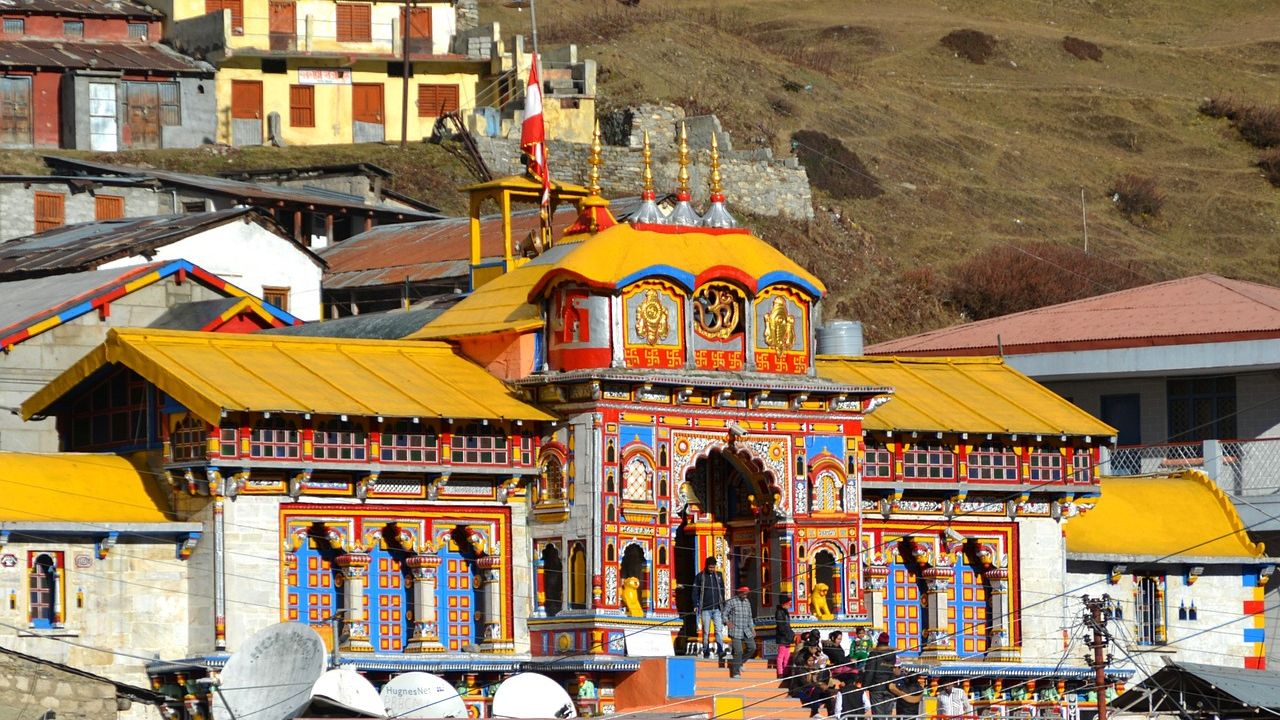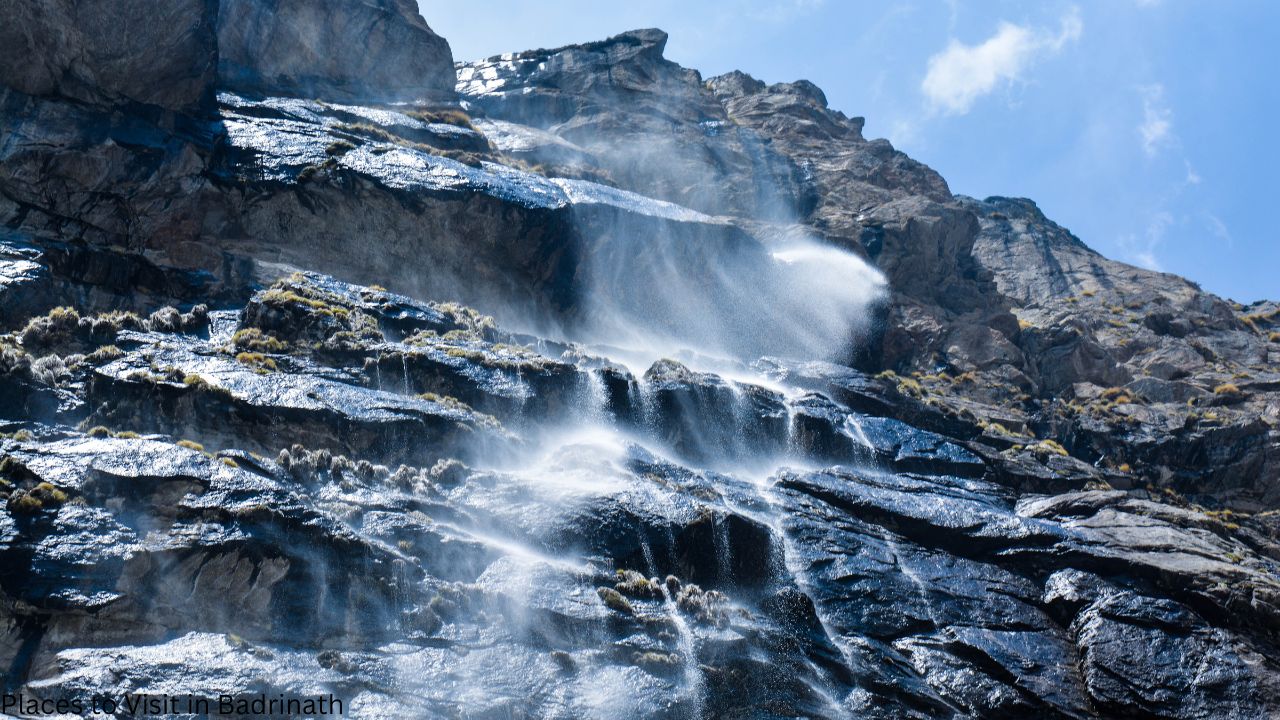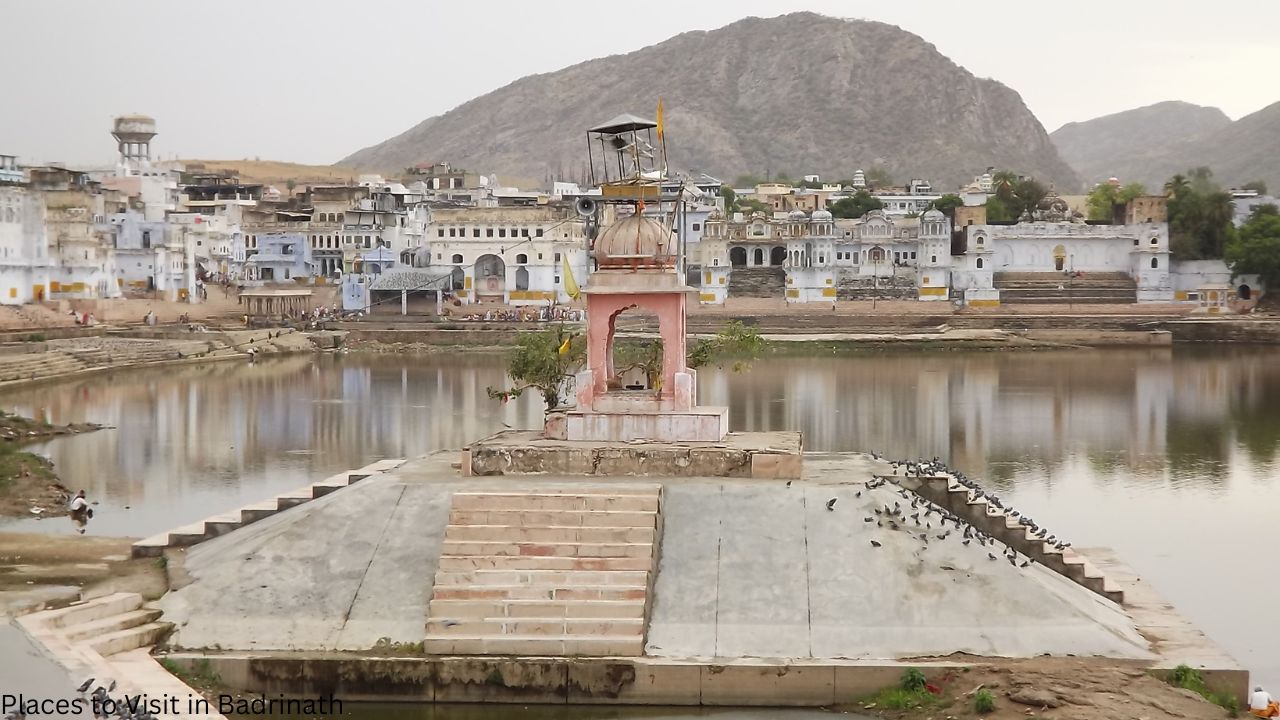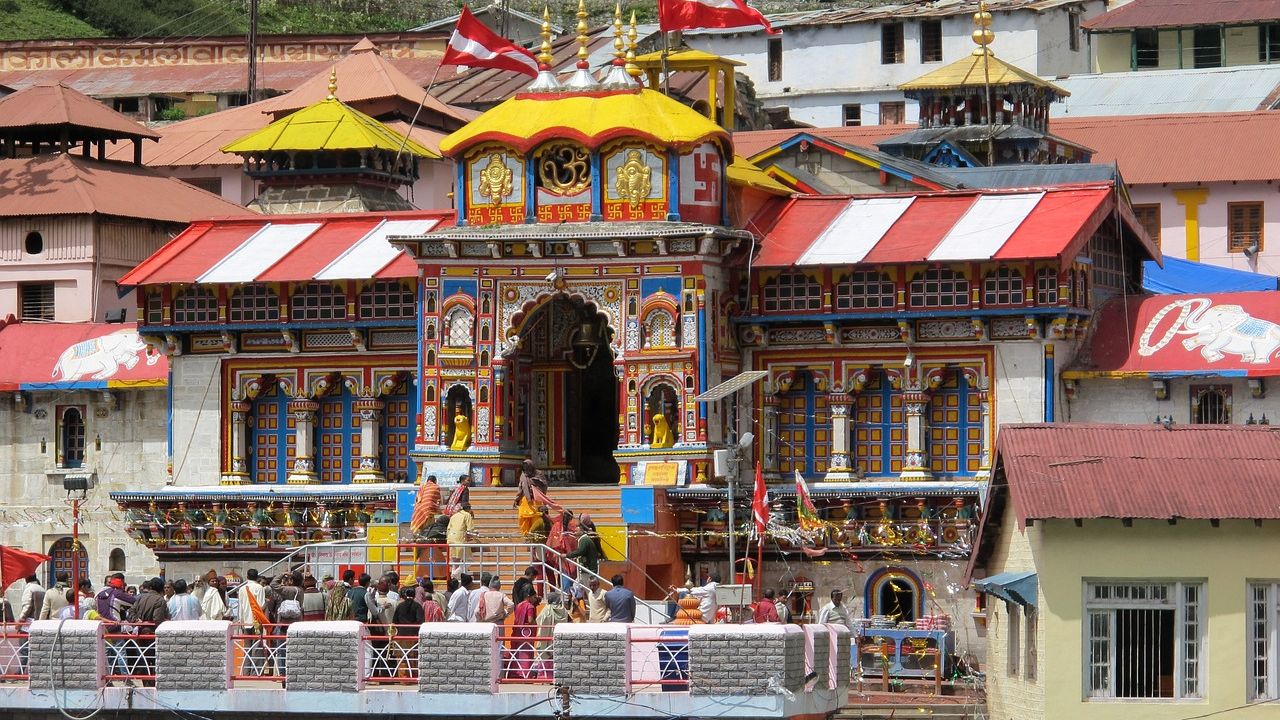Places to Visit in Badrinath
High up in the majestic Himalayas, nestled amongst snowy peaks and roaring rivers, lies the holy town of Must Visit Places for a Complete Badrinath Experience Badrinath. Hindus consider this place sacred and famous for the beautiful Shri Badrinath Ji Temple, dedicated to Lord Vishnu. Badrinath is a must-visit destination if you’re looking for peace, stunning scenery, and a rich religious history.
Shri Badrinath Ji Temple
Shri Badrinath Ji Temple, also called Badrinarayan Temple, is a famous Hindu temple in Badrinath, India. Nestled in the Himalayas, it is dedicated to Lord Vishnu, one of the main Hindu gods.
Considered very holy, it’s one of the four pilgrimage sites called Char Dham. The temple is around 1,000 years old and is open six months a year due to the snowy mountain weather. You’ll see a beautiful structure with a golden roof if you visit.

Vasudhara Falls
Tucked away in the mountains near Badrinath is Vasudhara Falls, a hidden gem. This cascading waterfall plunges 400 feet down a cliff, creating a mesmerizing sight and a refreshing sound. Legend says the water is like nectar, and the falls are only visible to those pure of heart. Must Visit Places for a Complete Badrinath Experience
Reaching Vasudhara Falls involves a scenic trek about 7 kilometers from Mana Village. The path offers stunning mountain views, but no shops are along the way, so bring water and snacks!

Saraswati River
In Hinduism, the Saraswati is a sacred river, personified as the goddess of knowledge, music, and art. Vedic texts and ancient Hindu scriptures mention the Saraswati as a mighty river that nourished the land.
Scientists believe an ancient Saraswati River once flowed through northwestern India but dried up around 4,000 to 5,000 years ago. They think its course is now followed by the Ghaggar-Hakra River system, which is primarily seasonal today. The Saraswati’s disappearance is believed to be due to climate change.

Bheem Pul
Bheem Pul, near Badrinath, India, is a natural bridge formed by a giant rock. Legend says Bheema, a super strong character from the Hindu epic Mahabharata, placed the rock to help his wife cross the rushing Saraswati River.
Made of a single massive stone, Bheem Pul allows you to walk over the river and enjoy the view. It’s located in Mana village, known as the last village on the Indian side of the China border. So, you can visit Bheem Pul for its natural wonder, place in Hindu mythology, and beautiful surroundings.
Brahma Kapal
Rahma Kapal is a sacred spot on the banks of the Alaknanda River in Badrinath, India. It holds special significance for Hindus. Here, people perform rituals to honor their deceased ancestors, believing it helps their souls attain moksha, or liberation from the cycle of rebirth.
The name Brahma Kapal translates to “skull of Brahma” and stems from Hindu mythology. Legend says Lord Brahma performed penance here. Today, many families visit Brahma Kapal to perform these traditional ceremonies for their loved ones.

Tapt Kund
Tapt Kund, meaning “hot spring” in Hindi, is a natural wonder near India’s famous Badrinath temple. This steaming pool of hot Water is thought to have therapeutic powers and is considered sacred by Hindus. Many pilgrims dip in the kund (pool) for a purifying bath before entering the temple. The water is naturally heated underground and reaches around 45 degrees Celsius (113 degrees Fahrenheit)! Separate bathing areas are available for men and women. Must Visit Places for a Complete Badrinath Experience
Ganesh Gufa
Tucked away in Mana village, near Badrinath, is Ganesh Gufa, a naturally formed cave. This mysterious spot holds religious significance for Hindus. Legend says Lord Ganesha, the elephant god known for wisdom and writing, penned down the epic Mahabharata as narrated by sage Vyas here.
The cave is pretty dark, but the surrounding area offers scenic beauty with lush greenery and mountain views. If you’re visiting Badrinath, Ganesh Gufa is a short trip away and a great place to experience local myths and history.
Vyas Gufa
Vyas Gufa, also known as Vyas Cave, is a sacred site near Badrinath, India. Legend says this cave is where the wise sage Ved Vyasa, with the help of Lord Ganesha, composed the Mahabharata, a famous Hindu epic poem.
Located in Mana village, it’s a short trek but can be challenging. Inside the cave, you’ll find a statue of Maharishi Ved Vyasa and a unique roof that resembles ancient scripture pages. It’s a popular destination for pilgrims and history buffs alike
Alka Puri
Location: Alka Puri is an urban area on the western side of Vadodara, Gujarat—places to Visit in Badrinath.
Glacier: Alka Puri is also the name of a glacier near Badrinath, nestled in the Himalayas. It’s about 15 kilometers from Badrinath and is known for trekking adventures and beautiful mountain scenery.
Mata Murti Temple
Mata Murti Temple, located near Badrinath, India, is a Hindu temple dedicated to Mata Murti, the mother of the twin gods Nar and Narayan. According to legend, Mata Murti prayed for Lord Vishnu to be born from her womb.
Impressed by her devotion, Vishnu appeared as twins – Narayana, linked to Lord Krishna, and Nara, linked to Arjuna. The temple is believed to bring detachment from worldly desires. Many visit on special days like Shukla Tritiya, Ashtami, and Chaturdashi.
Narada Kund
Narada Kund is a hot water spring near India’s famous Badrinath Temple. It’s a sacred spot with two central beliefs:
Adi Shankara Discovery: Legend says that Adi Shankara, a revered Hindu teacher, found the idol of Lord Vishnu here.
Narada’s Meditation: The name comes from Narada Muni, a divine sage who is believed to have meditated here for a long time.
Devotees often take a dip in the hot water of Narada Kund before visiting the Badrinath Temple, as this is considered significant religiously and has potential healing properties.
Yogadhyan Badri
Yogadhyan Badri is a Hindu temple dedicated to Lord Vishnu in the Himalayas, near Badrinath. It is known for its idol of Vishnu in a meditative pose (“Yogadhyan” means “meditation”).
Legend says the Pandavas, heroes of the Hindu epic Mahabharata, spent time here. The temple is significant because it serves as the winter home for the sacred idol of Lord Vishnu from the main Badrinath temple, which closes during the harsh winter.
Charanpaduka
Charanpaduka, meaning “footprints” in Sanskrit, is a sacred rock about 3 kilometers from Badrinath in India. Hindus believe it bears the imprints of Lord Vishnu’s feet, left either upon his descent from heaven or by his minister carrying his sandals. This boulder, perched at over 3,300 feet, is a significant pilgrimage site for Hindus who seek to see the footprints and offer prayers.
Mana Village
Mana Village is a tiny gem nestled near Badrinath, India. It holds the title of the “last village” on the border between India and China, perched high in the Himalayas at over 3,200 meters (10,500 feet)! Here, you’ll find breathtaking mountain views, fresh air, and a unique culture. The village is known for its Bhotia people, their traditional way of life, and delicious local dishes. Mana Village is a must-see if you’re looking for adventure and a chance to explore a remote mountain community. Must Visit Places for a Complete Badrinath Experience
Neelkanth
- Neelkant as a Name: Neelkant could be a proper name for a person or place. In Hindi, “Neel” means “blue,” and “Kant” can mean “edge” or “border.” So, Neelkant could translate to “Blue Edge” or “Blue Border.”
- Neelkant as a Specific Reference: With more context, it’s easier to know if Neelkant refers to something specific. It could be a mountain peak, a historical figure, or even a fictional character.
If you can provide more information about where you encountered “Neelkant,” I might be able to give you a more straightforward explanation.
Pandukeshwar
- Location: Pandeshwar could be a neighborhood or area in Mangalore, India. This is because there are online references to English language classes situated there.
- Less Likely – Less Information: Pandukeshwar might be a lesser-known landmark or place name in sporadic cases. However, with more context, it’s easier to confirm this. Must Visit Places for a Complete Badrinath Experience
FAQS
1) How many places are in Badrinath?
Badrinath is a town focused around the famous Shri Badrinath Ji Temple. While there are other religious sites and natural areas to explore nearby, Badrinath doesn’t have many separate “places” in the traditional sense.
2) Which month is best for Badrinath?
The best months to visit Badrinath depend on what you prefer weather-wise.
May to June and September to October are ideal for pleasant weather, ranging from 7°C to 18°C. This makes sightseeing and exploring more comfortable. These months fall within the pilgrimage season for the Char Dham Yatra.
July and August experience monsoon rains, which can cause landslides and road closures.
3) How many days are enough for Badrinath?
The number of days you’ll need in Badrinath depends on what you want to see and do.
Two days is a good minimum if you want to visit the main sites, like the Badrinath Temple. This will give you enough time to relax and enjoy the beautiful mountain scenery.
If you also want to explore the surrounding area, such as Mana Village or Vasudhara Falls, then you’ll need 3-4 days.
And if you’re looking for a more leisurely pace and want to do some trekking, then you could easily spend a week or more in Badrinath.
4) What to buy in Badrinath?
Shopping in Badrinath is a great way to remember your trip! Here, you’ll find unique souvenirs like miniature statues of Hindu gods, woolen shawls to keep you warm, and prayer items like incense and beads. You can also find delicious local jams, pickles, and beautiful handmade crafts.
5) What is the cost of a Badrinath trip?
The cost of a Badrinath trip can vary depending on what you want to see and do. In general, expect to spend anywhere from ₹ $12,000 (around $150) for an introductory trip to ₹ $165,000 (around $2,000) for a helicopter tour with luxury stays.
6) Which is more complex, Kedarnath or Badrinath?
Kedarnath is trickier to reach than Badrinath. You’ll likely need to do a trek for Kedarnath, while Badrinath is accessible by car for most of the journey. Both are high in the mountains, so be prepared for the altitude!
Read Also:
Distance Between Madurai and Tirunelveli by Car, Train & Bus
Rajahmundry to Kakinada Distance in Kilometers and Miles
Delhi to Haridwar Distance & Best Route for Your Journey
Gorakhpur to Ayodhya Distance by Road & Train
